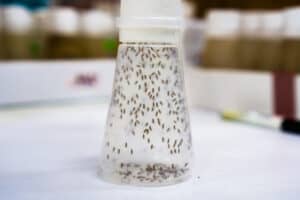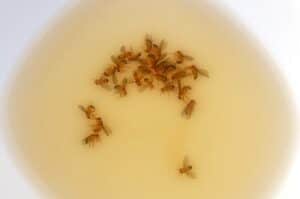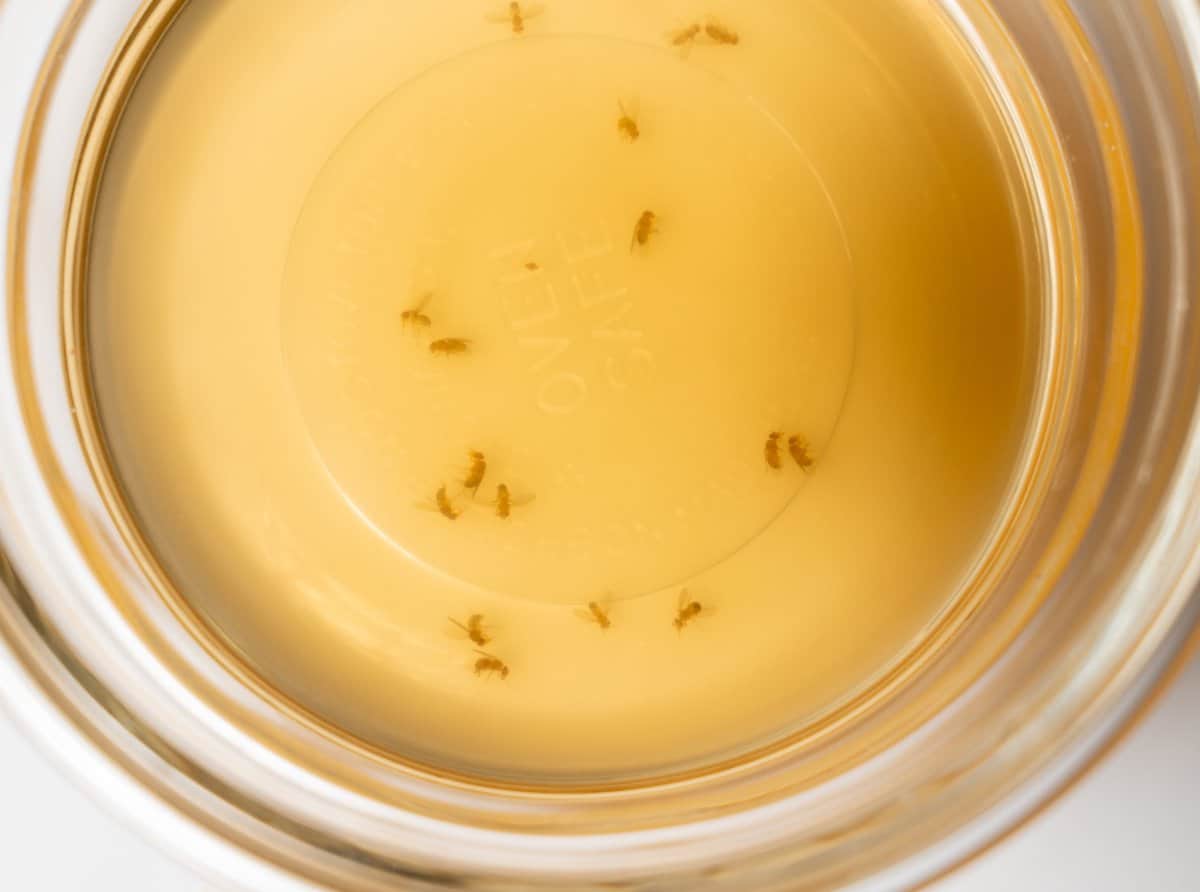Guide on How to Create a DIY Fly Trap
If you’re dealing with a fly problem, you may be wondering how to create a DIY fly trap that actually works. Flies are often pesky to deal with and can infest homes during the hot summer months. While there are various commercial products available, they can be quite expensive and can sometimes not be effective. Luckily, it’s relatively easy to make your own trap using items you likely already have around the house. So how do you create a DIY fly trap that works?
The most common way how to make a DIY fly trap that works is to use a plastic bottle with some type of sweet liquid inside as bait. Once the fly enters the bottle, it will be unable to escape and will eventually drown. Some other types of DIY fly traps include a soap fly trap, a sugar fly trap, and a vinegar fly trap.
Using any of these DIY fly traps is often a better option for those looking to find a way to get rid of the flies in their homes without paying a large amount of money to do so. So, now that you have an idea of the kinds of DIY fly traps that you make and use, take a few minutes and a fly problem, consider trying out one of these DIY fly traps to get rid of your flies for good!

What Attracts Flies?
Before we get into how to make the trap, it’s important to understand a little bit about what attracts flies in the first place. Flies are attracted to food sources, which is why you’ll often see them hanging around garbage cans or near fruit that’s starting to rot. They’re also attracted to moisture, so they may be found near bathrooms or other damp areas. Making traps that mimic these foods, scents, and environments is important in creating a successful DIY fly trap.
How to Make a DIY Fly Trap
Now that you know what attracts flies, you can use that information to your advantage when creating a trap. The most common DIY fly trap uses a plastic bottle with some type of sweet liquid inside as bait. Once the fly enters the bottle, it will be unable to escape and will eventually drown.
The way how to make this type of trap, start by cutting the top off a plastic bottle. Then, mix together some water with sugar or honey to create a sweet liquid. Pour this mixture into the bottom of the bottle, and then place the top of the bottle upside down inside the bottom portion. Tape or glue the two pieces together to secure them in place.
Finally, make a small hole in the top of the bottle (large enough for flies to enter) and hang your trap up in an area where you’ve seen flies present. You can also put it on a flat surface, but be sure to keep it away from areas where children or pets may be able to reach it.
Other Types of Fly Traps
There are other types of fly traps you can make as well, such as one that uses a piece of paper rolled into a cone shape. To make this trap, start by cutting a piece of paper into a rectangular shape. Then, roll the paper up into a cone shape and secure it with tape.
Next, cut a small hole in the point of the cone (again, large enough for flies to enter) and fill the inside of the cone with your sweet liquid bait. Hang or place your trap as described above, and wait for the flies to come.
1. Traps Using Soap
You can also make a fly trap using a bowl or other container filled with water and dish soap. The dish soap will break the surface tension of the water, causing any fly that lands on top to sink and drown. To make this trap, simply mix together water and dish soap in a bowl or container, and then place it in an area where you’ve seen flies present.
2. Traps Using Sugar
One of the most common DIY traps uses a plastic bottle. Simply cut the top off of a 2-liter soda bottle and invert it so that the opening is at the bottom. Next, add some sweet bait such as sugar water or honey to the bottom of the bottle. The flies will be attracted to the sweetness and crawl in, but won’t be able to fly back out again.
3. Traps Using Vinegar
You can also use a wide-mouthed jar for your trap. Add an inch or so of apple cider vinegar to the bottom of the jar, then cover it with plastic wrap. Secure the wrap in place with a rubber band and poke small holes all over it. The flies will be attracted to the vinegar and crawl in through the holes, but won’t be able to escape.
4. Aesthetic Looking Traps
If you’re looking for a more aesthetically pleasing option, try this floral fly trap. Start by cutting a flower shape out of card stock or construction paper. Next, make a cone out of the paper and glue it together. Then, tape the cone onto the end of a wooden dowel or chopstick. Finally, add some sweet bait to the bottom of the cone and wait for the flies to crawl in.
5. No Bait Traps
For a trap that doesn’t require any bait, try this one. Cut a 2-liter soda bottle in half and tape the pieces together so that the top of one bottle is inverted and fits snugly inside the other. Then, add a small amount of water to the bottom of the inner bottle and place it outside. The flies will be attracted to the water and crawl in, but won’t be able to fly back out again.
Benefits of DIY Fly Traps
One of the biggest benefits of making your own fly trap is that you can customize it to your specific needs. For example, if you’re only dealing with a few flies, you can make a small trap using a plastic bottle or jar. But if you’re dealing with a larger infestation, you can make a larger trap using a bucket or garbage can.
Another benefit of DIY fly traps is that they’re much cheaper than store-bought options. You can usually find everything you need to make one at home, and even if you have to buy some of the supplies, it will still be cheaper than buying a ready-made trap.
Finally, DIY fly traps are also eco-friendly since they don’t use any harmful chemicals. If you’re looking for a more natural way to get rid of flies one of these DIY fly traps with the best reviews are the way to go.

What to Do If Your Fly Trap Is Not Working
If you’ve made a fly trap but it’s not working as well as you’d hoped, there are a few things you can do to troubleshoot the problem. First, make sure you’re using the right bait. Flies are attracted to sweet smells, so something like sugar water or honey should work well. You can also try adding a piece of fruit to your trap.
Another thing to check is the size of the opening on your trap. If it’s too small, the flies might not be able to get in. But if it’s too large, they might be able to fly back out again. The opening should be just big enough for the flies to crawl through.
Finally, make sure you’re placing your trap in the right location. Flies are attracted to heat, so putting it in a sunny spot is usually a good idea. You can also try placing it near where you’ve seen the flies congregating.
If you’re still having trouble, there are a few other things you can try, such as adding a drop of dish soap to your water or using vinegar instead of water. But if all else fails, you can always buy a ready-made fly trap from the store.
Getting Rid of Flies
Having a fly free home is a great feeling, and knowing you got rid of them yourself can feel just as good. Using these fly trap tips and DIY ideas is a great way to ensure your home stays fly free in the future, keeping you and your family happy. By using science and knowing what flies are attracted to, you are able to make effective fly traps that successfully capture and kill flies in no time. It is important to pay attention to where flies are staying within your house and what location is the best for your DIY fly trap, but using the tips above so leave you feeling prepared to take on your fly problem. So, we hope this article has helped you solve your fly problem and that your DIY fly trap works great. Thanks for reading!

